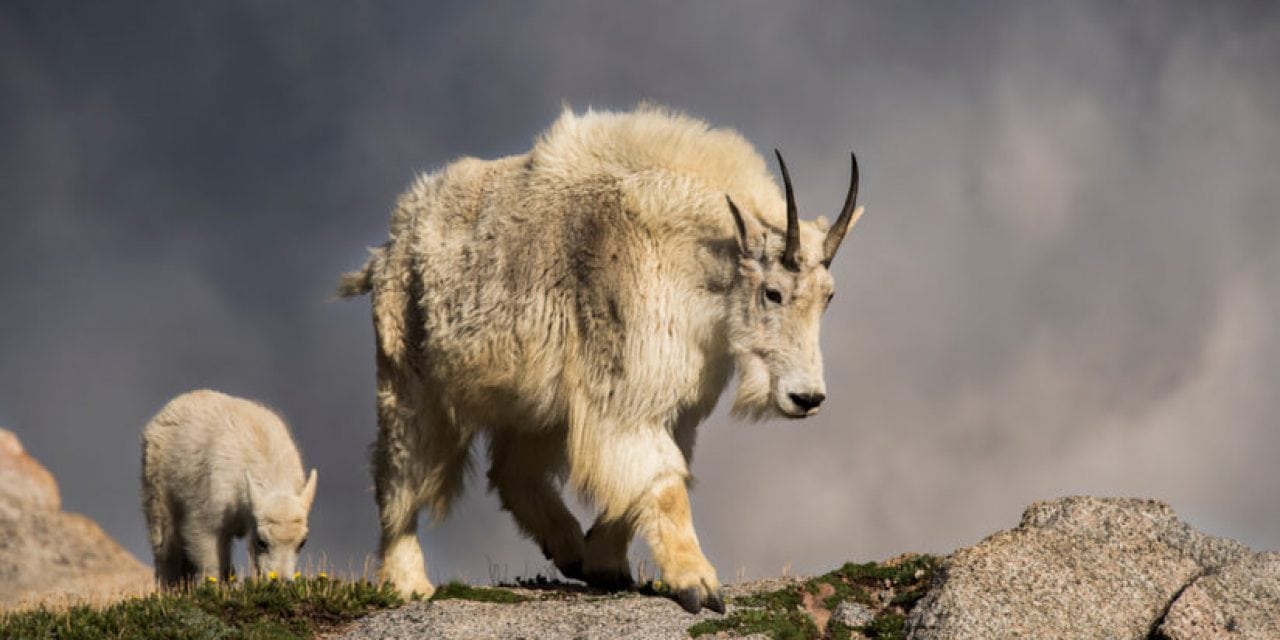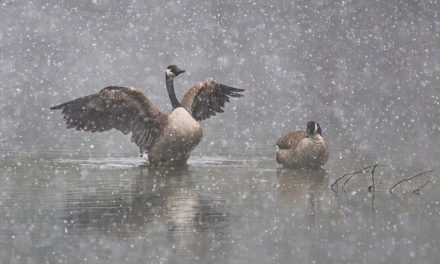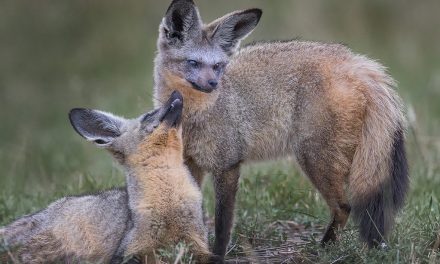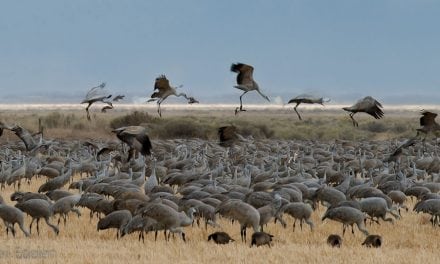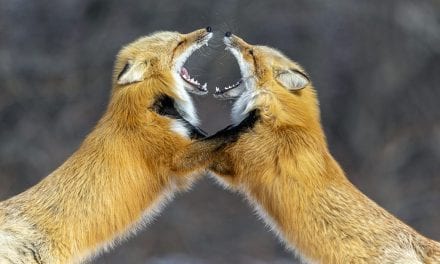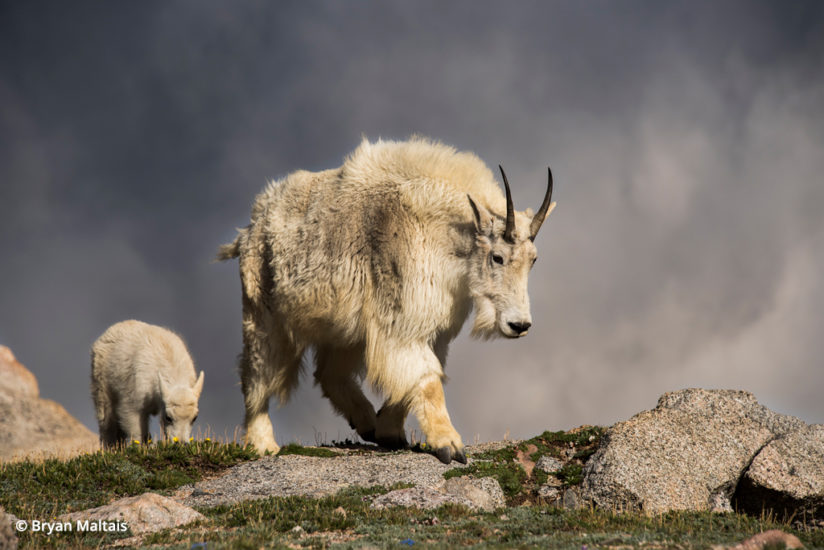
Location
Mount Evans is located in central Colorado at the top of the Mount Evans Scenic Byway. The byway is about 32 miles west of Denver off Interstate 70 at exit 240. At the exit, turn left (south) on Colorado Highway 103, then drive about 14 miles to the fee station. After that, pass Echo Lake and turn right on Colorado Highway 5 (Mt. Evans Road).
Driving to Mount Evans entails narrow, winding shelf roads with sheer vertical drops to one side. There are also sections of road that are deeply buckled by freezing and thawing. Though you don’t need a rugged vehicle to drive here, it’s advisable to drive slow, let other vehicles pass at pinch points and check the weather before going to avoid freezing precipitation.
Weather
With the mountain over 14,000 feet, you should dress for the worst. Summer afternoons commonly bring brilliant sunny skies one moment, followed by snow or frigid downpours the next. It often drops below freezing at dusk. Wind is usually present and strong. At this altitude, be prepared for lightheadedness, difficulty breathing with even light walking and symptoms of altitude sickness.
Photo Experience At Mount Evans
The drive up to Mount Evans is a continuous spectacle, with opportunities for both landscape and wildlife photography. Along the way, you’re likely to encounter bighorn sheep, marmot, coyote and wildflower meadows. A super-telephoto lens is handy for the fleeting coyote or golden eagle soaring overhead, but many animals are accustomed to vehicles and can be photographed up close. At the top of Mount Evans, herds of mountain goats that are habituated to humans roam the crags. They often come close enough to capture “animal in its environment” shots without the need for a telephoto lens. Because of the vast range of changing subjects, I often use a 28-300mm lens. The mountain goats are constantly on the move, so instead of using a tripod, I handhold my camera with image stabilization turned on, a wide aperture and an ISO around 400.
At the top of Mount Evans, you’ll be peering down over rows of jagged mountains. Fantastic for landscape photography, I also love to shoot time-lapse sequences here. At this level, you’re close to the clouds where their movement is fast and volatile. Even a short time-lapse can capture clouds smashing against the mountains and heaving like a stormy sea. Make sure to know how your camera’s intervalometer settings work before “go time”, and bring your heaviest tripod to contend with the violent wind. Also, bring a polarizer and a (variable) neutral-density filter to capture cloud movement in still shots. As for lens selection, you’ll want the option to take wide-angle shots, but in this environment you’ll more often need to zoom in to individual peaks across valleys, so bring a tele zoom as well.
The Mount Evans area can be photographed at any time of day. There are east- and west-facing subjects for golden-hour photography and low-hanging clouds for dramatic mid-day shooting, and wildlife is usually present along the road all day.
Best Times
The Mount Evans Scenic Byway is typically open from the Friday of Memorial Day weekend through the first weekend in October. Late June is among the best times to visit because mountain goat nannies have newborn kids in tow.
Contact: USDA Forest Service, fs.usda.gov/recarea/arp/recreation/recarea/?recid=28508
YOU MIGHT ALSO LIKE
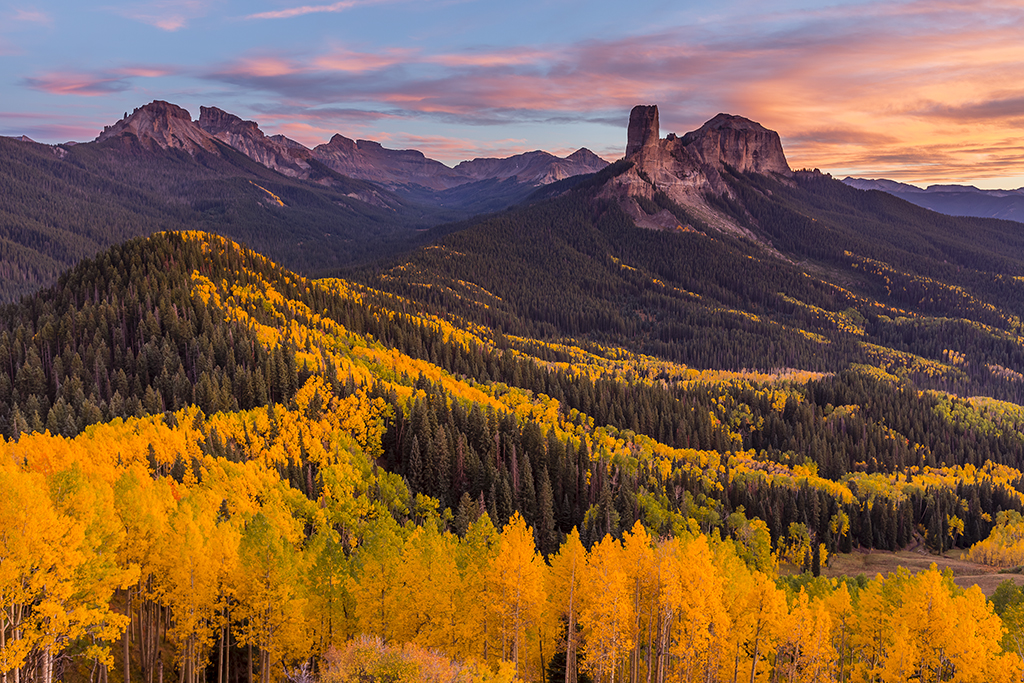
Colorado Fall Color Pilgrimage
Check out these east coast spots for sweeping vistas, plentiful wildlife and spectacular seasons. Read now.
The post Mount Evans, Colorado appeared first on Outdoor Photographer.

